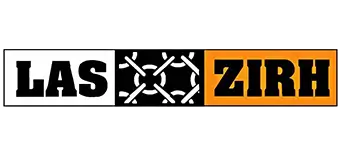Stop Flat Tires, Start Saving: Reduce Operating Costs with OTR Tire Chains
Operating a heavy-duty vehicle fleet comes with a myriad of challenges, and one of the most frustrating and costly issues is dealing with flat tires. These incidents lead to downtime and result in increased maintenance expenses and productivity loss. However, a simple yet effective solution can help you reduce operating costs significantly: using Off-The-Road (OTR) tire chains.
Flat tires are more than just a minor inconvenience. They can have a significant impact on your bottom line. Every minute a vehicle is out of commission due to a flat tire translates to lost productivity and potential revenue. Additionally, the cost of replacing a tire and the associated labor can quickly add up, especially if these incidents occur frequently.
The Costly Consequences of Flat Tires
Flat tires are more than just a minor inconvenience. They can have a significant impact on your bottom line. Every minute a vehicle is out of commission due to a flat tire translates to lost productivity and potential revenue. Additionally, the cost of replacing a tire and the associated labor can quickly add up, especially if these incidents occur frequently.
OTR Chains to Reduce Operating Costs and Flat Tires in Heavy-Duty Fleets
OTR tire chains are a proven solution for reducing flat tires and their associated costs. These chains provide superior traction and grip, reducing the likelihood of a tire going flat due to punctures or blowouts. By installing OTR tire chains on your vehicles, you can significantly reduce the risk of flat tires, thus minimizing downtime and maintenance expenses.

In addition to cost savings, OTR tire chains also enhance safety and performance. The improved traction provided by these chains allows vehicles to operate more efficiently, especially in challenging terrain or adverse weather conditions. This not only reduces the risk of accidents but also improves overall productivity and operational efficiency.
While the initial investment in OTR tire chains may seem significant, it pales in comparison to the long-term cost savings they can provide. By reducing the frequency of flat tires and the associated downtime and maintenance costs, OTR tire chains can help you save money in the long run. Additionally, the improved safety and performance they offer can lead to further cost savings and operational efficiencies.
Improved Safety and Performance
In addition to cost savings, OTR tire chains also enhance safety and performance. The improved traction provided by these chains allows vehicles to operate more efficiently, especially in challenging terrain or adverse weather conditions. This not only reduces the risk of accidents but also improves overall productivity and operational efficiency.
Long-Term Cost Savings
While the initial investment in OTR chains may seem significant, it pales in comparison to the long-term cost savings they can provide. By reducing the frequency of flat tires and the associated downtime and maintenance costs, OTR tire chains can help you save money in the long run. They help to reduce operating costs. Additionally, the improved safety and performance they offer can lead to further cost savings and operational efficiencies.
The Right OTR Chain for Your Operation
When selecting OTR tire chains for your fleet, it’s essential to consider factors such as tire size, vehicle application, and operating conditions. Consulting with a tire chain specialist can help you choose the right chains for your specific needs, ensuring maximum effectiveness and cost savings.
How to Choose the Right OTR Chains
Selecting the correct OTR tire chains is crucial to maximize benefits and reduce operating costs.

First
Consider the size of your tires. Ensure the chains fit snugly without being too tight or loose. Ill-fitting chains can cause damage or fail to provide adequate protection.
Second
Evaluate the terrain where your vehicles operate. Different chains suit various environments, such as rocky, muddy, or snowy conditions. Chains with aggressive tread patterns work best for rocky or uneven surfaces. For mud or snow, choose chains with a broader grip to prevent slippage and improve traction.
Third
The type of vehicle also influences your choice. Heavy machinery like loaders and bulldozers require sturdier chains compared to lighter equipment. Robust chains withstand the intense pressure and weight of these vehicles, ensuring longevity and efficiency.
Fourth
Material composition matters as well. High-quality steel chains offer durability and resistance to wear and tear. However, consider chains with added features like corrosion resistance if your operations involve wet or humid conditions. These features prolong the life of the chains, further helping to reduce operating costs.
Fifth
Consulting with a specialist can provide valuable insights. Experts can recommend chains based on your specific needs and operational challenges. This tailored approach ensures you get the most effective solution, enhancing safety and performance.
Sixth
Regular maintenance also plays a vital role. Inspect the chains frequently for signs of wear or damage. Proper maintenance ensures optimal performance and extends the life of your investment.
By choosing the right OTR tire chains, you can significantly reduce operating costs and improve your fleet’s efficiency.


